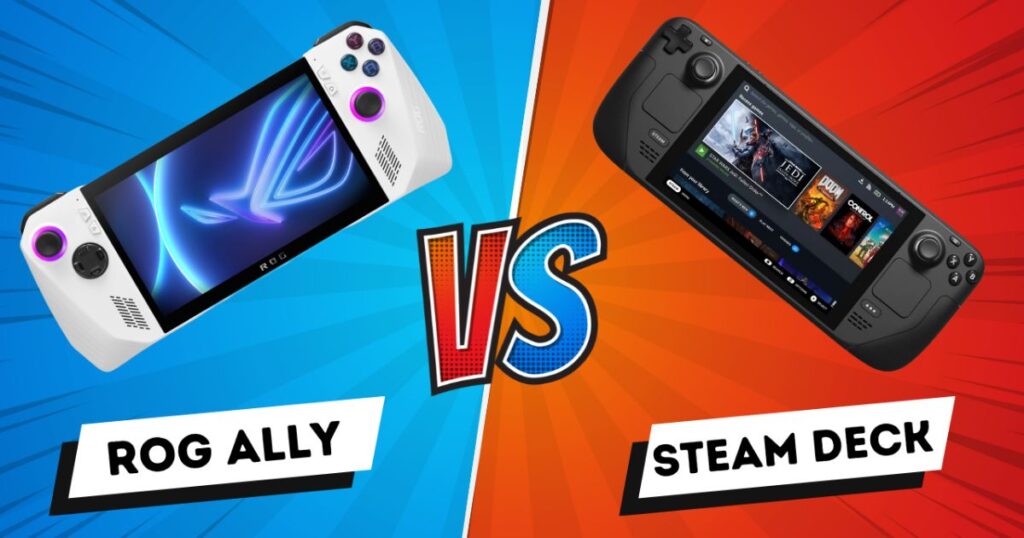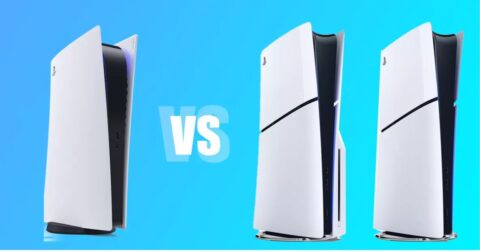In the ever-evolving world of gaming, portability has become just as important as performance. Handheld gaming consoles are no longer limited to casual titles; they’re now capable of delivering PC-level gaming experiences on the go. Among the most popular options in 2025, the Steam Deck by Valve and the ROG Ally by ASUS have emerged as two of the strongest contenders, each offering a unique approach to portable gaming.The Steam Deck gained massive popularity thanks to its seamless integration with the Steam ecosystem, robust hardware, and budget-friendly pricing. On the other hand, the steam deck vs rog ally has impressed gamers with its Windows 11-based flexibility, powerful specs, and the ability to run almost any game or launcher without limitations.
However, when it comes to choosing your ideal gaming buddy, things become more complicated. Should you pick the Steam Deck for its optimized performance and affordability, or the ROG Ally for its powerhouse features and broader compatibility?In this blog, we’ll dive deep into a detailed comparison of the Steam Deck and ROG Ally, covering design, display, performance, game compatibility, battery life, price, and more, so you can decide which handheld gaming console perfectly matches your style.
Design & Build Quality: Steam Deck vs. ROG Ally
In terms of the design and construction quality, the Steam Deck and ROG Ally take two different paths to deliver comfort and portability. The Steam Deck OLED model features a slightly larger and bulkier design, measuring approximately 298 × 117 × 49 mm and weighing around 640 g, which lends it a solid, durable feel. Its rounded grips and ergonomic curves make it highly comfortable to hold during long gaming sessions, while the inclusion of dual trackpads offers precise control, especially for PC-style games. Built from high-quality, sturdy plastic, the Steam Deck feels rugged and ready for heavy use, making it ideal for gamers who prioritize durability and extended playtime comfort.
The ROG Ally, on the other hand, focuses on sleekness and portability. Measuring 280 × 111 × 21–32 mm and weighing just 608 g, it’s slimmer and lighter than the Steam Deck, making it easier to carry around. Its modern, How to Check Stellar Blade PC Region Lock Status angular design, combined with textured grips and stylish RGB accents, gives it a premium, gaming-centric aesthetic. However, it lacks trackpads and relies solely on joysticks for navigation, which may feel limiting in specific PC titles. While its aluminum-accented build feels more premium, some users have reported occasional durability concerns, such as the SD card slot overheating.Choose the Steam Deck if you want comfort and ruggedness, but opt for the ROG Ally if you prefer a sleeker, lighter, and more stylish handheld design.
Display & Visual Experience
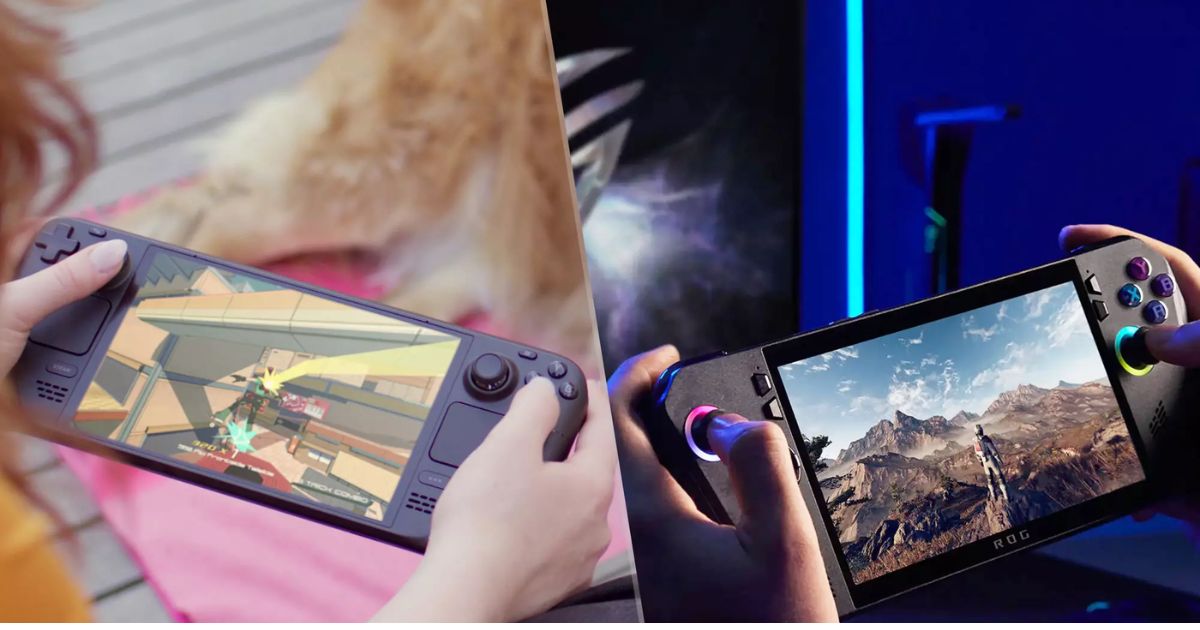
When it comes to handheld gaming, the display is essential to providing an immersive experience. , and both the Steam Deck and ROG Ally take different approaches to visual quality. The ROG Ally boasts a 7-inch Full HD IPS touchscreen with a 1920×1080 resolution and an impressive 120Hz refresh rate, making it a dream for gamers who love smooth visuals and vibrant colors. Its 500-nit brightness ensures excellent visibility even in well-lit environments, and the sharp color reproduction provides a premium, console-like experience.
On the other hand, the Steam Deck OLED model features a slightly larger 7.4-inch OLED display with a 1280×800 resolution and a 90Hz refresh rate. While the resolution is lower than that of the ROG Ally, the OLED panel delivers deeper blacks, higher contrast, and richer colors, enhancing the overall visual depth, especially in story-driven games and dark environments. Additionally, the OLED’s improved HDR capabilities give it an edge when it comes to cinematic gaming experiences.If you prioritize higher resolution and faster refresh rates, the ROG Ally takes the lead. However, if vivid colors, deeper blacks, and immersive contrast are more important, the Steam Deck OLED offers a superior visual experience for most gamers.
Performance & Hardware Specs: Steam Deck vs. ROG Ally
When it comes to raw performance, the Steam Deck and ROG Ally are built on entirely different architectures, and that sets them apart in terms of gaming power. The ROG Ally is powered by AMD’s Ryzen Z1 Extreme APU, featuring an 8-core/16-thread Zen 4 CPU paired with RDNA 3 graphics, making it a powerhouse for handheld gaming. It comes with 16GB LPDDR5 RAM and operates on Windows 11, providing you with a variety of launchers, including Steam, Xbox Game Pass, Epic Games, and more. Thanks to its 120Hz display and superior GPU performance, the ROG Ally can handle AAA titles like Cyberpunk 2077 and Horizon Forbidden West at higher settings with smoother frame rates compared to the Steam Deck.
The Steam Deck OLED features a custom AMD APU with a 4-core/8-thread Zen 2 CPU, paired with RDNA 2 graphics, and 16GB of LPDDR5 RAM. While not as powerful as the ROG Ally, it’s optimized for SteamOS, which ensures efficient resource management and smooth performance in most games. Its 90Hz OLED display enhances visual quality, and Steam’s Proton compatibility layer allows many Windows-based games to run seamlessly.If maximum performance and Windows flexibility matter to you, the ROG Ally is the clear winner. But if you prefer optimization, stability, and smoother gameplay within the Steam ecosystem, the Steam Deck holds its own exceptionally well.
Game Library & Compatibility: Steam Deck vs. ROG Ally
One of the most important factors when choosing a handheld gaming console is game library compatibility, and here the Steam Deck and ROG Ally cater to different types of gamers.The Steam Deck is built around SteamOS 3.0, an operating system based on Linux designed explicitly for gaming. It integrates seamlessly with Steam, giving you access to tens of thousands of titles in Valve’s vast library. Thanks to Proton, a compatibility layer, even most Windows-only games run smoothly without any manual tweaks. The Steam Deck also supports cloud saves, Steam Remote Play, and easy access to indie titles. While it’s optimized for Steam, it’s not locked down; you can install Windows on it if you want access to launchers like the Epic Games Store, Xbox Game Pass, GOG, and more.
The ROG Ally, on the other hand, comes pre-installed with Windows 11, offering unlimited flexibility. You can install virtually any game launcher, such as Steam, Epic, Battle.net, Xbox Game Pass, or Ubisoft Connect, without restrictions. Its Game Pass integration makes it a perfect choice for gamers who prefer subscription-based libraries and cross-platform titles. However, because it’s a Windows-based handheld, optimization can sometimes require extra tweaks for smoother performance. choose the Steam Deck if you want seamless Steam integration and out-of-the-box optimization, but opt for the ROG Ally if you wish to achieve maximum compatibility and the freedom to access every central PC game platform.
Battery Life & Charging: Steam Deck vs. ROG Ally
When it comes to battery life and charging, both the Steam Deck and ROG Ally offer portable gaming power, but their approaches and performance differ significantly.The Steam Deck OLED is equipped with a 50Wh battery, providing 5 to 7 hours of gameplay on lighter titles and 3 to 4 hours on more demanding AAA games. Thanks to SteamOS optimization and efficient power management, it delivers consistent battery performance without needing constant adjustments. Top 10 Best Switch Indie Games You Need to Play Now Additionally, the OLED model offers improved efficiency compared to the original LCD version. The device supports 45W USB-C PD fast charging, enabling it to reach approximately 80% charge in about 60 minutes, making it convenient for on-the-go gaming sessions.
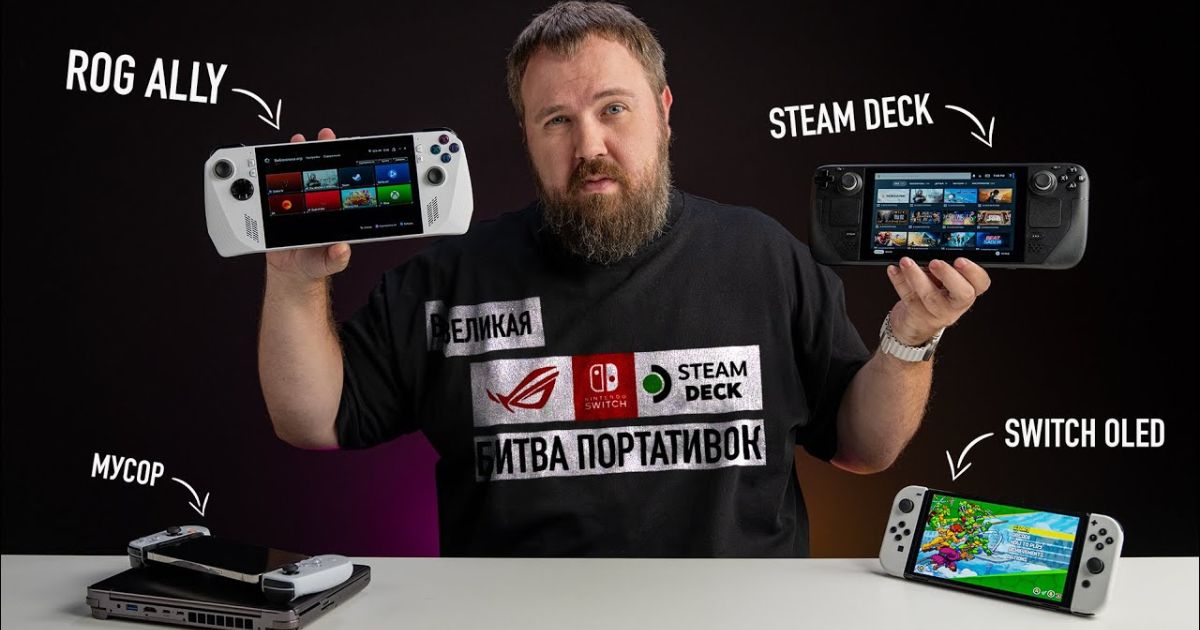
The ROG Ally comes with a slightly smaller 40Wh battery, which impacts its endurance. While less demanding indie or retro games can last around 4 to 5 hours, performance-heavy AAA titles can drain the battery in as little as 1.5 to 2 hours, especially when running at its 120Hz refresh rate or in Turbo Mode. On the upside, it supports 65W USB-C fast charging, which significantly reduces downtime by recharging the device to 50% in about 30 minutes. if you prioritize longer battery life and better optimization, the Steam Deck OLED is the better pick. However, if you prefer faster charging speeds and are willing to accept shorter play sessions between charges, the ROG Ally holds an edge.
Software & User Interface: Steam Deck vs. ROG Ally
The software and user interface are key elements that define the overall gaming experience, and the Steam Deck and ROG Ally approach this differently.The Steam Deck runs on SteamOS 3.0, a Linux-based operating system designed specifically for gaming. Its interface is clean, intuitive, and optimized for handheld gameplay, providing quick access to your Steam library, friends list, and settings. Features like Proton allow most Windows-based games to run smoothly without complicated configurations. Additionally, Steam Deck supports cloud saves, remote play, and customizable controls, including rear buttons, trackpads, and gyroscopic inputs. The system is designed to maximize performance per watt, ensuring smoother gameplay and better battery management. For advanced users, installing Windows is possible, providing access to other platforms like Epic Games Store or Xbox Game Pass, though this requires some setup.
The ROG Ally, in contrast, runs Windows 11 natively, giving it full PC functionality in a handheld form. You can install any game launcher, productivity software, or customization tools without restrictions. ASUS’s Armoury Crate SE adds a console-friendly layer, allowing you to quickly adjust performance modes, Windows 10 vs Windows 11: Which Is Better for Gaming in 2025 RGB lighting, and system settings with ease. However, because it’s a Windows device, some games may require manual tweaks for optimal performance or battery efficiency.In summary, the Steam Deck excels in simplicity, optimization, and features tailored for handheld use. At the same time, the ROG Ally offers maximum flexibility, customization, and full Windows compatibility, making it an appealing option for gamers who want a portable PC experience.
Price, Value & Variants: Steam Deck vs. ROG Ally
When considering a handheld gaming device, price, value, and available variants are key factors to consider. Here’s a detailed comparison of the Steam Deck and ROG Ally to help you make an informed decision.
Steam Deck
Three Steam Deck versions are available from Valve:
- 256GB LCD Model: Priced at $399, this entry-level model features a 7-inch LCD with a 60Hz refresh rate, offering a solid gaming experience for budget-conscious users.
- 512GB OLED Model: At $649, this mid-tier option boasts a 7.4-inch HDR OLED display with a 90Hz refresh rate, Ghost Of Tsushima PC | Ghost Of Tsushima Steam Online offering enhanced visuals and performance.
- 1TB OLED Model: For $699, this high-end variant includes all the features of the 512GB model but with increased storage and additional premium accessories.
These models are available directly through Valve’s official website.
ROG Ally
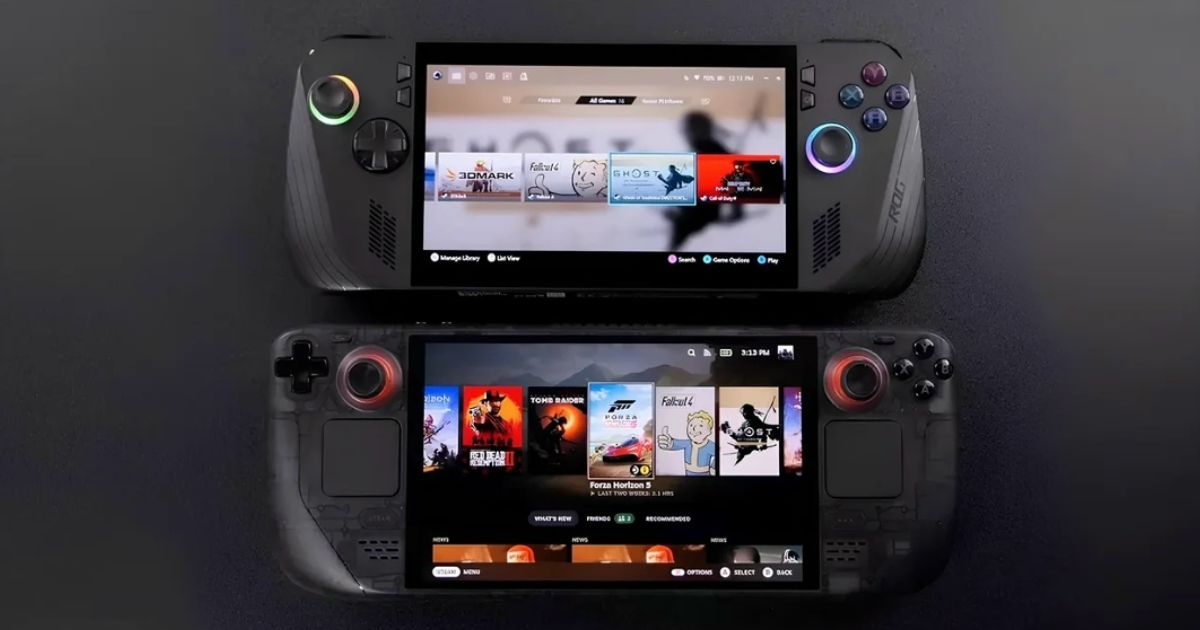
ASUS’s ROG Ally lineup includes:
- Standard ROG Ally: Initially priced at $499.99, this model features a 7-inch 1080p IPS display, powered by AMD’s Ryzen processor, and boasts a 120Hz refresh rate. Extreme processor. It’s bundled with 3 months of Xbox Game Pass Ultimate.
- ROG Ally X: The premium variant, expected to be priced around €899 (approximately $1,050), offers enhanced performance and features, although specific details are yet to be fully disclosed.
- Xbox ROG Ally: A collaboration between ASUS and Microsoft, Switch 2 Sales Expectations Nintendo and Market Impact this model is anticipated to be priced at $599, featuring a customized Windows 11 interface optimized for gaming.
Steam Deck vs. ROG Ally: Pros & Cons
| Feature | Steam Deck | ROG Ally |
|---|---|---|
| Operating System | SteamOS (Linux-based) with Proton compatibility for Windows games | Windows 11 with Armoury Crate SE for game launcher and system tuning |
| Game Library | Primarily Steam; can install Windows OS for other platforms | Access to Steam, Epic Games Store, Xbox Game Pass, and more |
| Display | 7″ LCD (60Hz) or 7.4″ OLED (90Hz) with HDR support | 7″ 1080p IPS (120Hz) |
| Performance | AMD Zen 2 CPU with RDNA 2 GPU; handles most games well | AMD Ryzen Z1 Extreme CPU with RDNA 3 GPU; higher performance potential |
| Battery Life | 3–7 hours depending on usage; OLED model offers better efficiency | 1.5–5 hours; performance-heavy games drain battery quickly |
| Weight & Ergonomics | Heavier (640g); ergonomic design with trackpads and thumbsticks | Lighter (608g); ergonomic but less pronounced grips |
| Software & UI | SteamOS optimized for gaming; desktop mode available | Windows 11; Armoury Crate SE for customization |
| Price Range | $399 (64GB) to $649 (1TB OLED) | $499.99 (Z1) to $1,050 (Z2 Extreme) |
| Docking Support | Official dock available separately | Docking support; dock sold separately |
| Customization | Limited to SteamOS and Linux tools | Full access to Windows customization tools |
Conclusion
Choosing between the Steam Deck and ROG Ally ultimately comes down to your gaming priorities and lifestyle. The switch 2 vs steam deck in comfort, battery efficiency, and seamless integration with the Steam ecosystem. Its ergonomic design, durable build, and optimized SteamOS make it perfect for gamers who want a reliable handheld that delivers smooth gameplay for hours without fuss. The inclusion of trackpads, gyroscope controls, and customizable buttons further enhances its versatility, especially for PC-style games.The ROG Ally, on the other hand, shines in raw performance, display quality, and platform flexibility. Running Windows 11 natively allows access to virtually any game launcher, including Steam, Epic Games, and Xbox Game Pass. Its 120Hz 1080p display and powerful Ryzen Z1 Extreme processor make it ideal for gamers who prioritize high frame rates and cutting-edge graphics, though battery life can be shorter under heavy loads.
In summary, if you want a portable, optimized, and long-lasting Steam-focused handheld, the Steam Deck is your best choice. If you prefer maximum flexibility, raw power, and the freedom to run almost any PC game, the cyberpunk 2077 on steam deck becomes your ultimate gaming buddy. Both devices are excellent, but the right pick depends on whether you value ecosystem optimization or performance versatility the most.
FAQ
1. Which handheld is better for AAA gaming?
The ROG Ally generally performs better with AAA titles, thanks to its Ryzen Z1 Extreme processor and RDNA 3 graphics, which are capable of higher frame rates and smoother visuals. The Steam Deck handles AAA games well, but at slightly lower settings.
2. Can the Steam Deck run Windows games?
Yes. While the Steam Deck runs SteamOS by default, it also supports Proton, which enables most Windows games to run seamlessly. Advanced users can also install Windows 11 for full compatibility with other game launchers.
3. Does the ROG Ally support Steam games?
Absolutely. Running Windows 11, the ROG Ally can install Steam, along with the Epic Games Store, Xbox Game Pass, and other launchers, providing access to virtually any PC game.
4. Which handheld has better battery life?
The Steam Deck OLED offers 3–7 hours of gameplay depending on the title and settings, making it more suitable for extended sessions. The ROG Ally provides 1.5–5 hours of use, especially during shorter periods, such as when playing demanding AAA games.
5. Are these handhelds portable for travel?
Yes, both are portable, but the ROG Ally is slightly lighter and slimmer. In contrast, the Steam Deck’s ergonomic design makes it comfortable for long gaming sessions on the go.
6. Which is better for beginners?
For gamers who want a ready-to-go, optimized experience, the Steam Deck is ideal. If you’re comfortable managing Windows settings and want flexibility, the ROG Ally is a better fit.


